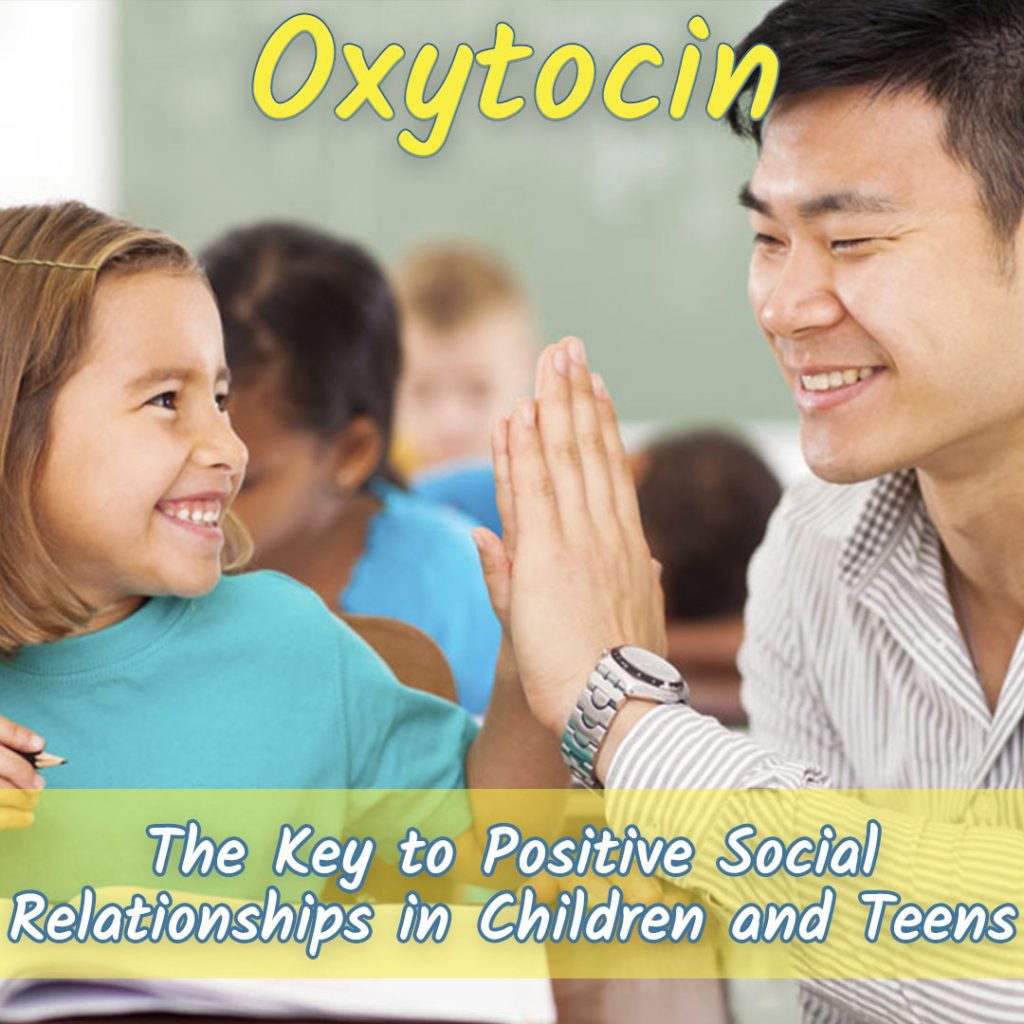OXYTOCIN: The Key To Positive Social Relationships in Children and Teens
Oxytocin has been dubbed the “love chemical.” It is the hormone that is released when we feel love and trust in relationships. For most people, they know oxytocin as a significant part of the parent-child bonding process. However, it is also very important in overall human relationships and is considered our “social glue.”
The release of oxytocin is not automatic but rather, a learned response. It is very important for children to develop an effective oxytocin response. We find that when children are abused or neglected, they often have underdeveloped oxytocin responses. This is because they have been locked in the fight or flight response and have not developed the oxytocin response to calm down. Therefore, bonding is very important to children in the early years of life.
This bonding, that significantly comes through the parent-child relationship, can also be nurtured through positive interactions with adults such as teachers, coaches, and anyone who works with them on a regular basis. Since oxytocin is an anti-stress chemical, children who feel love and trust with important adults in their lives are better able to cope with stress and are more open. These positive feelings also contribute to a more positive self-image and increased empathy. This creates an upward spiral of positive social relationships.
Now that we understand the neuroscience surrounding oxytocin, how can we, as parents, teachers, coaches, and anyone who works with children, use this information? We must create a learning environment that is safe and increases the child’s “social satisfaction.”
The SKILLZ program does this by teaching with the brain in mind and utilizing game-based learning. Along with this, two of the Teaching SKILLZ that are used in class are specifically designed to improve the students’ oxytocin response system by increasing their social skills and empathy.
1) Healthy Competition: The use of “healthy competition” as a teaching skill in class helps the students’ make connections with their peers and gives them a “tribe” type bond. For example, when running a drill, the instructor may run it as girls vs. boys or long hair vs. short hair groups. This helps the students develop social connections, so they work together and trust each other to do the best for the team.
2) Extrinsic Motivation: The use of “extrinsic motivation” in class helps the students become more self-disciplined. For example, to get students more motivated, the instructor can say “If you do your form five times without any mistakes, I’ll do 10 pushups.” This is exciting for the students because it helps them to see the instructor as more vulnerable by having to do pushups. They develop the self-discipline to get their form correct so they can get the reward of seeing the instructor do pushups, which is fun for them.
The important thing to keep in mind is that our brains can develop a healthier oxytocin response at any age. It won’t happen overnight and will take time and effort on the part of the adult but the benefits for the child will be incredible. Creating environments that foster trust will make this process easier. Remember, even the smallest friendly interactions, such as fist bumps and high fives, can release oxytocin.


